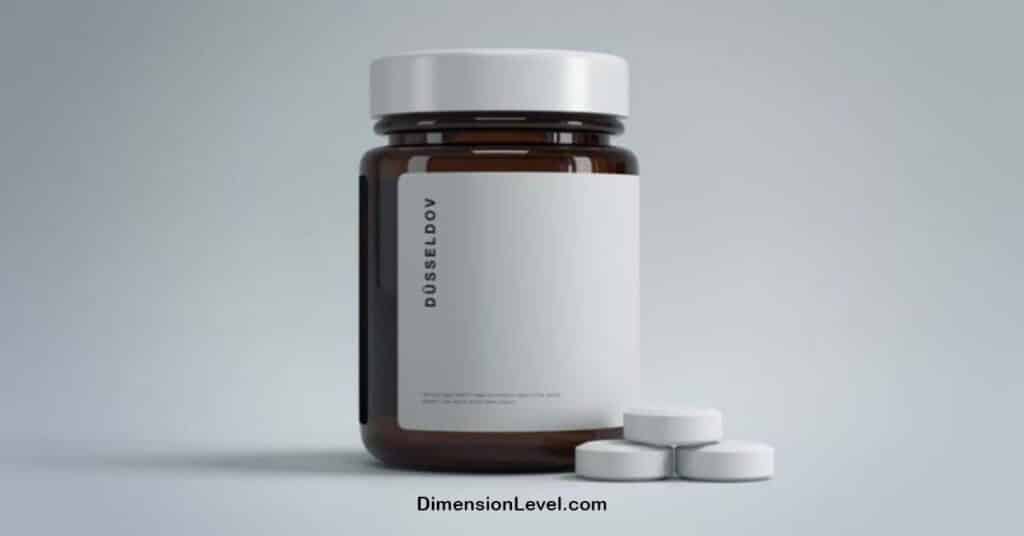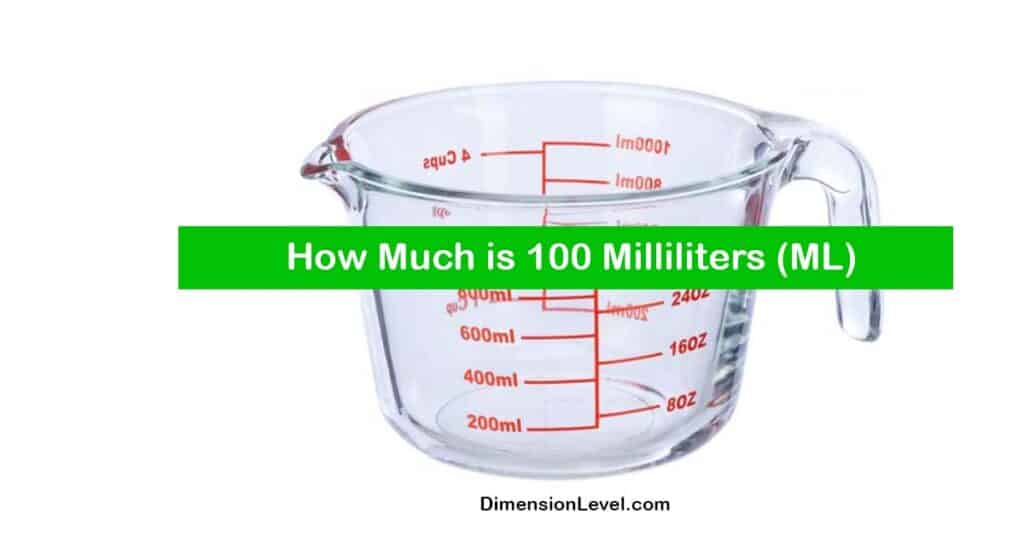In our daily lives, we frequently encounter measurements without giving them much thought. One such measurement is 100 ml, a volume that appears in various contexts, from cooking to medication. But how much is 100 ml exactly?
This guide will explore this common measurement, providing you with relatable comparisons and practical insights to help you visualize and understand 100 ml in everyday situations.
Introduction: The Enigma of 100 ML
Understanding volume measurements is crucial in many aspects of our lives. Whether you’re following a recipe, taking medication, or mixing a cocktail, knowing how to visualize and measure 100 ml can make a significant difference. Milliliters (ml) are a metric unit of volume commonly used for measuring liquids. One milliliter is equal to one cubic centimeter, making 100 ml a relatively small but frequently used amount.
The ability to accurately gauge 100 ml can be particularly useful in various scenarios:
- Cooking and baking, where precise measurements can make or break a recipe
- Medication dosing, where accuracy is crucial for effective treatment
- Fitness and hydration, where tracking liquid intake is important
- Bartending and mixology, where precise measurements ensure balanced cocktails
- Scientific experiments and laboratory work, where exact volumes are essential
You Might Also Like Things That Are 10 Meters Long
Visualizing 100 ML: A Quick Reference
Before we dive into specific comparisons, let’s establish a basic understanding of what 100 ml looks like in common scenarios.
How Much is 100 ml Water in a Glass?
Picture a standard drinking glass filled about one-third to halfway. That’s roughly 100 ml. The exact height will vary depending on the glass’s shape and size, but this visual can serve as a quick mental reference. In most cases, 100 ml of water will fill approximately 2-3 inches of a standard 8-ounce glass.
To give you a more precise idea:
- In a narrow, tall glass: 100 ml might reach about 3-4 inches high
- In a wide, short tumbler: 100 ml might only fill about 1-2 inches
This variation highlights the importance of understanding volume rather than just eyeballing the height of liquid in a container.
How Much 100 ml in Grams?
For water and many other liquids, 100 ml is equivalent to 100 grams. This 1:1 ratio makes conversions between volume and weight straightforward for water-based liquids. However, it’s important to note that this equivalence doesn’t hold true for all substances.
For example:
- Milk: approximately 103 grams
- Olive oil: about 92 grams
- Honey: around 142 grams
- Mercury: about 1,355 grams
These variations occur due to differences in density among various liquids. Understanding this relationship between volume and weight can be particularly useful in cooking, where recipes might call for ingredients by weight rather than volume.
You might be Interested Common Things That Are 5 Centimeters Long
12 Relatable Comparisons for 100 ML
To help you better understand and remember what 100 ml looks like, here are twelve common comparisons:
1. One-ninth of a Quart Milk Container

A quart of milk contains approximately 946 ml. Divide that by nine, and you get about 105 ml – very close to our 100 ml reference. So, next time you’re pouring milk, imagine dividing that quart container into nine equal parts.
This comparison is particularly useful because quart milk containers are common in many households. It provides a readily available visual reference for 100 ml.
2. Twenty Teaspoons

In the kitchen, 100 ml equates to approximately 20 teaspoons. While it’s not practical to count out 20 teaspoons for a recipe, this comparison can help you estimate smaller amounts when precise measuring tools aren’t available.
Here’s a quick conversion table:
| Teaspoons | Milliliters |
| 1 | 5 |
| 5 | 25 |
| 10 | 50 |
| 20 | 100 |
Explore this Things That Are 80 Feet
3. One-fifth of a 500-ml Bottle

500 ml water bottles are ubiquitous. To visualize 100 ml, simply imagine one-fifth of that bottle filled. This comparison is particularly useful for tracking your daily water intake.
Many health experts recommend drinking at least 2 liters (2000 ml) of water per day. Using this comparison, that would be equivalent to four 500-ml bottles. Each 100 ml portion would represent 5% of your daily recommended intake.
4. 1/9 Measuring Jug

A standard measuring jug often holds about 1 liter or 1000 ml. If you divide this into nine equal parts, each part would be approximately 111 ml, which is close to our 100 ml reference.
This comparison is particularly useful in cooking and baking scenarios where you might be using a large measuring jug for other ingredients.
5. 2/5 of Coffee Cup

A standard coffee cup typically holds about 240-250 ml. Two-fifths of this would be very close to 100 ml. So, next time you’re enjoying your morning brew, imagine filling your mug just under halfway – that’s about 100 ml.
This comparison can be particularly useful for those who are monitoring their caffeine intake or trying to cut down on coffee consumption.
6. Two Shot Glasses

Standard shot glasses usually hold between 44-59 ml, depending on the country. In the United States, a typical shot glass contains 44 ml (1.5 fl oz). Therefore, 100 ml is equivalent to about two full shot glasses, plus a little extra.
This comparison is particularly useful in bartending and social settings. It’s worth noting that the definition of a “shot” can vary:
- US: 44 ml (1.5 oz)
- UK: 25 or 35 ml (0.85 or 1.18 oz)
- Australia: 30 ml (1 oz)
- Germany: 20 ml (0.67 oz)
7. Medicine Bottle

Many over-the-counter liquid medications, particularly cough syrups, come in 100 ml bottles. This standardized size makes it easy for healthcare professionals to prescribe and for patients to measure doses accurately.
Understanding that a typical medicine bottle contains 100 ml can help in several ways:
- Estimating how long the medication will last based on prescribed dosage
- Recognizing when you’re running low and need a refill
- Comparing the relative size of different medications
8. Six and a Half Tablespoons

For those who love to cook, 100 ml translates to approximately 6.5 tablespoons. This comparison is particularly useful when following recipes that switch between metric and imperial measurements.
| Measurement | Equivalent |
| 100 ml | 6.5 tablespoons |
| 1 tablespoon | 15.4 ml |
Read More About Common Things That Are 2 Millimeters
9. Small Yogurt Cup

Individual yogurt cups often come in 100 ml sizes, making them a perfect real-life reference for this volume. Next time you enjoy a small yogurt, you’re consuming about 100 ml of creamy goodness.
This comparison is not only useful for understanding volume but also for portion control and nutritional awareness. Many single-serving food items are portioned at or around 100 ml, making this a common volume in dietary contexts.
10. 2/3 of a Tea Cup

A traditional teacup typically holds around 150 ml. Picture filling your teacup about two-thirds full, and you’ve got a good approximation of 100 ml.
This comparison can be particularly useful in social settings or when enjoying afternoon tea. It’s also a handy reference for those who use tea consumption as a way to increase their daily fluid intake.
11. Perfume Bottle
Many travel-size perfume bottles contain 100 ml of fragrance. This size is significant because it’s the maximum amount of liquid allowed in carry-on luggage for many international flights.
Understanding this comparison can be helpful for:
- Packing for air travel
- Estimating how long a perfume bottle might last
- Understanding the relative value of different perfume sizes
Read also Common Things That Are 1 Meter Long
12. Baby Food Jar
Standard baby food jars often hold around 100 ml, providing another everyday reference for this volume.
This comparison can be particularly useful for:
- Parents and caregivers preparing baby meals
- Understanding portion sizes for infants
- Repurposing baby food jars for small storage needs
Practical Applications of 100 ML
Understanding 100 ml goes beyond mere trivia. This measurement has practical applications in various aspects of our daily lives:
Cooking and Baking: Why Precise Measurements Matter
In the culinary world, precision can make or break a dish. 100 ml might be the difference between a perfectly moist cake and a dry, crumbly disappointment. When a recipe calls for 100 ml, using these comparisons can help you measure accurately, even if you don’t have a measuring jug on hand.
Consider these scenarios:
- Adding liquid to a bread dough: Too much or too little can significantly affect the texture
- Making a sauce or gravy: The right amount of liquid ensures proper consistency
- Preparing cocktails: Precise measurements ensure balanced flavors
Medication Dosing: The Importance of Accuracy
In healthcare, accurate dosing is crucial. Many liquid medications use milliliter measurements for dosing. Understanding what 100 ml looks like can help patients and caregivers administer the correct amount of medicine, ensuring effective treatment and avoiding potential overdoses.
For example:
- Pediatric medications often come with dosing instructions in ml
- Some adult medications require careful measurement, especially for conditions like diabetes
Beverage Industry: Standard Serving Sizes
The beverage industry often uses 100 ml as a standard serving size for nutritional information. Being familiar with this volume can help consumers make informed decisions about their drink choices and calorie intake.
This knowledge can be particularly useful for:
- Comparing nutritional content between different drinks
- Managing alcohol consumption
- Controlling portion sizes for calorie-dense beverages like smoothies or milkshakes
Fun Facts About 100 ML
To add some intrigue to our exploration of 100 ml, here are some fascinating facts:
- In nature: The king cobra, one of the world’s most venomous snakes, can deliver up to 500 mg of venom in a single bite. This amount of venom would occupy approximately 100 ml in volume.
- In technology: Many high-end fountain pens have ink reservoirs that hold about 100 ml of ink. This capacity allows for extensive writing before needing a refill.
- In fitness: During intense exercise, the human body can produce up to hundred ml of sweat per minute. This fact highlights the importance of staying hydrated during workouts.
- In agriculture: A medium-sized strawberry contains about hundred ml of water.
- In marine biology: Some species of jellyfish, despite their large appearance, consist of more than 95% water and have a body volume of only about 100 ml.
Tips for Measuring 100 ML at Home
While having proper measuring tools is ideal, there are ways to estimate 100 ml using common household items:
- Use a standard drinking glass: Fill it about one-third full.
- Repurpose a yogurt cup: Many individual yogurt servings come in 100 ml sizes.
- Utilize bottle caps: The cap of a 2-liter soda bottle typically holds about 10 ml. Count out 10 of these for 100 ml.
- Count tablespoons: Remember, 6.5 tablespoons equal approximately hundred ml.
- Use a small food container: Many small Tupperware or similar containers are designed to hold hundred ml.
- Egg size: A large chicken egg typically has a volume of about 50 ml, so two eggs would be close to hundred ml.
The Science Behind 100 ML
To truly appreciate 100 ml, it’s worth understanding the science behind volume measurements:
Volume and Density
Volume is the amount of space an object or substance occupies. Density, on the other hand, is the mass per unit volume of a substance. This relationship explains why hundred ml of different liquids might look different or have different weights.
For example, 100 ml of mercury would be much heavier than hundred ml of water due to mercury’s higher density. Conversely, 100 ml of olive oil would be slightly lighter than hundred ml of water.
Temperature and Volume
It’s important to note that temperature can affect volume, especially for liquids. As temperature increases, most liquids expand slightly, increasing their volume. This is why precise scientific measurements often specify the temperature at which the volume was measured.
Measuring Systems and 100 ml
100 ml fits neatly into the metric system, where it equals:
- 0.1 liters
- 100 cubic centimeters (cc)
- 0.1 deciliters
In the imperial system, hundred ml is approximately:
- 3.38 fluid ounces
- 0.42 cups
- 0.18 pints
Understanding these conversions can be helpful when working with recipes or products from different parts of the world.
Final Thoughts:
Understanding 100 ml and being able to visualize it in everyday contexts can be surprisingly useful. From cooking to taking medication, this knowledge empowers you to make more accurate measurements and informed decisions.
Remember these key comparisons:
- About one-third of a standard drinking glass
- Two shot glasses
- 6.5 tablespoons
- One-fifth of a 500 ml water bottle
- 20 teaspoons
- 2/5 of a coffee cup
- 2/3 of a tea cup
By internalizing these comparisons, you’ll find yourself more confident in situations requiring liquid measurements, whether you’re in the kitchen, at the bar, or managing your health.
Moreover, this knowledge serves as a foundation for understanding larger and smaller volumes. Once you can visualize hundred ml, it becomes easier to estimate 50 ml (half of that) or 200 ml (double).
In our increasingly global world, where metric measurements are becoming more common even in traditionally imperial-system countries, understanding milliliters is a valuable skill. It allows you to navigate international recipes, understand product labels from around the world, and communicate more effectively about volume in various contexts.
FAQ Section
Q: How does 100 ml compare to other common volume units? A: 100 ml is equivalent to:
- 3.38 fluid ounces (US)
- 0.42 US cups
- 0.1 liters
- 6.76 tablespoons (US)
- 20 teaspoons (US)
Q: Can I use 100 ml as a standard serving size for drinks? A: While 100 ml is often used as a standard serving size for nutritional information, actual serving sizes can vary. For alcoholic beverages, 100 ml is generally considered more than one standard drink in most countries.
Q: How do I convert 100 ml to ounces? A: 100 ml is approximately 3.38 fluid ounces (US). To convert ml to oz, multiply the ml value by 0.033814.
Q: Is 100 ml the same in all countries? A: Yes, milliliters are part of the metric system and are standardized internationally. However, common usage and visualizations might vary slightly between cultures.
Q: Why do some recipes use ml instead of cups or tablespoons? A: Milliliters offer more precision than cups or tablespoons, especially for smaller amounts. They’re also part of the metric system, which is used in most countries worldwide, making recipes more universally accessible.
Q: How can I measure 100 ml without a measuring cup? A: You can use everyday items like a small yogurt cup, 2/3 of a teacup, or 6.5 tablespoons. While not as precise as a dedicated measuring tool, these can provide a good estimate.
Q: Is 100 ml of water the same as hundred grams? A: For water at room temperature, yes. However, this 1:1 ratio doesn’t hold true for all liquids due to differences in density.
By mastering the concept of hundred ml and its various comparisons, you’ve equipped yourself with a valuable tool for navigating measurements in everyday life. Whether you’re cooking up a storm, mixing drinks, managing medications, or simply trying to stay hydrated, this knowledge will serve you well in ensuring accuracy and precision. Remember, understanding volume measurements like 100 ml is not just about numbers – it’s about enhancing your daily life with practical knowledge that can make a real difference in your cooking, health management, and overall efficiency in handling liquids.

Deborah Melindah is an experienced blogger passionate about exploring the world of dimensions. With a keen eye for detail and a talent for simplifying complex topics, she shares her knowledge on spatial concepts, measurements, and more. Deborah’s insightful posts make it easy for readers to grasp and apply dimensions in everyday life, whether for personal projects or professional pursuits.







